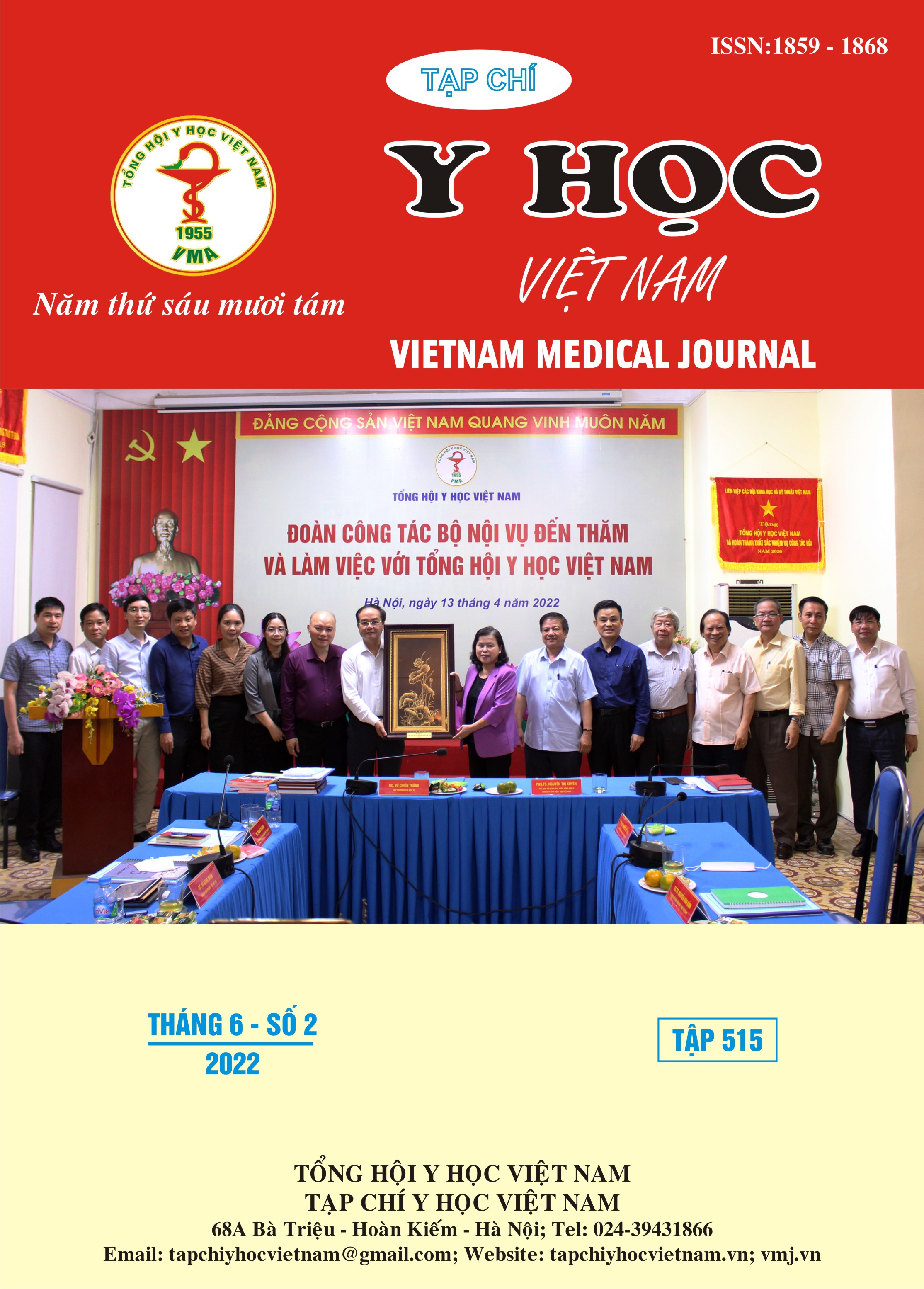KẾT QUẢ BƯỚC ĐẦU PHẪU THUẬT ĐIỀU TRỊ BỆNH LÝ TỦY CỔ ĐA TẦNG DO THOÁI HÓA TẠI BỆNH VIỆN BẠCH MAI
Nội dung chính của bài viết
Tóm tắt
Mục tiêu: Nghiên cứu nhằm đánh giá kết quả bước đầu phẫu thuật điều trị bệnh lý tủy cổ đa tầng dothoái hóa (M-CSM). Phươngpháp nghiên cứu: Nghiên cứu can thiệp lâm sàng không đối chứng đánh giá kết quả trước và sau phẫu thuật 30 bệnh nhân phẫu thuật bệnh lý tủy cổ đa tầng do thoái hóa từ tháng 6 năm 2019 đến tháng 8 năm 2021 tại Khoa chấn thương chỉnh hình và cột sống, Bệnh viện Bạch Mai. Kết quả: Tuổi trung bình (TB) 63,10 ± 9,82 (39-79 tuổi), 19 bệnh nhân nam (63,3%), 11 bệnh nhân nữ (36,7%). Tỷ lệ Nam/Nữ ≈ 2/1. Thời gian khám lại trung bình 13,13 tháng. Điểm mJOA trước mổ, sau mổ và khám lại lần lượt là 10,17 13,53 và 16,17. Tỷ lệ hồi phục hội chứng tủy cổ(RR) sau mổ và khám lại lần lượt là 45,46% và 76,69%.BN có thời gian khởi phát bệnh ³6 tháng có RR thấp hơn tại thời điểm khám lại cuối cùng (p=0,021). Góc gù vùng và góc C2-C7 ởBN PTLT cao hơn so với PTLS (p lần lượt 0,006 và 0,029). PTLS có thời gian mổ ngắn hơn nhưng mất máu nhiều hơn PTLT (p<0,001). Kết luận: Phẫu thuật điều trị M-CSM bước đầu cho kết quả hồi phục tốt ở cả hai đường mổ.
Chi tiết bài viết
Từ khóa
Bệnh lý tủy cổ do thoái hóa, kết quả phẫu thuật bước đầu
Tài liệu tham khảo
2. Nouri, A., et al., Degenerative Cervical Myelopathy: Epidemiology, Genetics, and Pathogenesis. Spine (Phila Pa 1976), 2015. 40(12): p. E675-93.
3. Zileli, M., et al., Outcome Measures and Variables Affecting Prognosis of Cervical Spondylotic Myelopathy: WFNS Spine Committee Recommendations. Neurospine, 2019. 16(3): p. 435-447.
4. Lad, S.P., et al., National trends in spinal fusion for cervical spondylotic myelopathy. Surg Neurol, 2009. 71(1): p. 66-9; discussion 69.
5. Zhang, R.J., et al., Clinical features and surgical outcomes of cervical spondylotic myelopathy in patients of different ages: a retrospective study. Spinal Cord, 2018. 56(1): p. 7-13.
6. Bajamal, A.H., et al., Posterior Surgical Techniques for Cervical Spondylotic Myelopathy: WFNS Spine Committee Recommendations. Neurospine, 2019. 16(3): p. 421-434.
7. Tetreault, L., et al., The modified Japanese Orthopaedic Association scale: establishing criteria for mild, moderate and severe impairment in patients with degenerative cervical myelopathy. Eur Spine J, 2017. 26(1): p. 78-84.
8. Hirabayashi, K. and K. Satomi, Operative procedure and results of expansive open-door laminoplasty. Spine (Phila Pa 1976), 1988. 13(7): p. 870-6.
9. Nouri, A., et al., Magnetic resonance imaging assessment of degenerative cervical myelopathy: a review of structural changes and measurement techniques. Neurosurg Focus, 2016. 40(6): p. E5.
10.Tetreault, L.A., A. Karpova, and M.G. Fehlings, Predictors of outcome in patients with degenerative cervical spondylotic myelopathy undergoing surgical treatment: results of a systematic review. Eur Spine J, 2015. 24 Suppl 2: p. 236-51.


